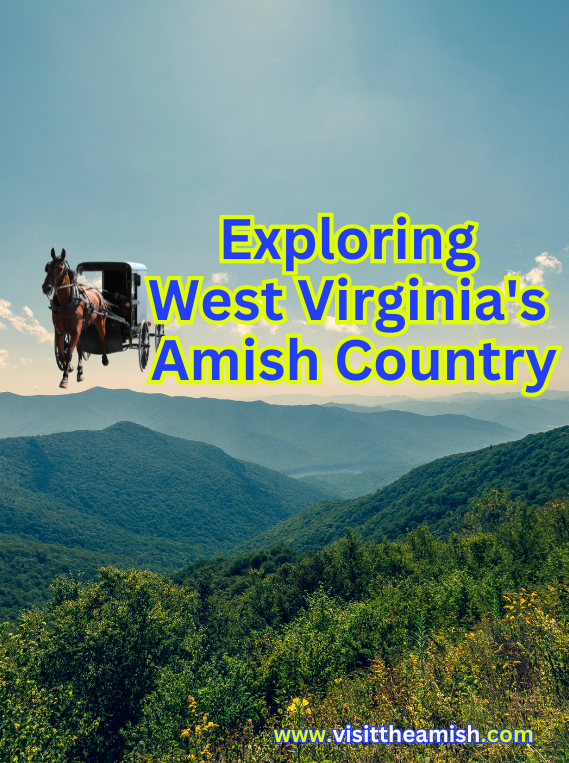As you explore West Virginia’s growing Amish communities, you’ll notice a recent uptick in settlement that may surprise you. While the Mountain State has long been wedged between Ohio and Pennsylvania – the two most populous Amish states – it has historically seen little Amish migration. However, that trend appears to be changing rapidly before your eyes.
In just the past two years, you’ve witnessed the number of Amish communities in West Virginia double from three to six. Two new settlements sprouted up in Barbour and Mineral Counties in 2018, followed by a third near Points in Hampshire County in 2019. As you drive through the eastern panhandle “hook” of the state, you’ll find yourself only about a 3.5 hour journey from Lancaster County, Pennsylvania – the heartland of Amish culture.
When you speak with members of this newest community, you’ll hear how gentrification in Lancaster County pushed them to seek more affordable land and lower taxes in West Virginia. “We usually like to stay by ourselves,” one Amish woman may tell you, while noting the friendliness of their new non-Amish neighbors.
As you observe their settlement process, you’ll notice two key challenges they face. First, the speed of traffic on Jersey Mountain Road poses a danger to their horse-drawn buggies and pedestrians. You may see them working with local officials to add safety features like strobe lights to their buggies. Second, you’ll find them grappling with county building codes requiring electricity in homes – a modern convenience at odds with their traditional lifestyle. Some may consider installing electrical systems but leaving them switched off as a compromise.

The main challenges new Amish communities in West Virginia likely face include:
- Establishing a large enough population to sustain the community. Sources indicate that Amish settlements need at least 11 families to be viable long-term. Many of the West Virginia communities are still quite small.
- Adapting to the mountainous terrain and geography, which can make travel by horse and buggy more difficult compared to flatter areas Amish are used to.
- Finding suitable farmland, as West Virginia is not traditionally known for large-scale agriculture like other states with significant Amish populations.
- Attracting and retaining Amish leadership, particularly ministers, to provide spiritual guidance to the new communities.
- Maintaining cultural practices and identity, including use of the Pennsylvania Dutch language, in a new environment.
- Navigating local building codes and regulations that may conflict with traditional Amish practices, such as requirements for electricity in homes.
- Ensuring economic viability through establishing Amish businesses and finding markets for Amish goods and services in a new area.
- Balancing interaction and commerce with the outside world while maintaining separation and traditional Amish values.
- Dealing with traffic safety issues as horse-drawn buggies share roads with faster moving vehicles in areas not used to Amish transportation.
- Attracting enough Amish families to create a marriage pool and sustain the community long-term.
While West Virginia is actively courting Amish settlers in some areas, these communities still face significant challenges in establishing themselves and thriving in a new environment quite different from traditional Amish strongholds in other states.

While exploring West Virginia’s Amish country, you’ll ponder why it’s taken so long for significant Amish migration to occur here. The mountainous terrain makes buggy travel difficult, and the state lacks a strong dairy farming tradition that often attracts Amish settlers. However, as you interact with the new communities, you’ll observe how evolving Amish occupations like small shops and alternative farming methods are making West Virginia newly appealing.
As you travel the state, keep your eyes open for signs of further Amish migration. With affordable land and a welcoming rural culture, you may witness West Virginia become an unexpected new frontier for Amish settlement in the coming years. The success of these pioneer communities could inspire more Amish to view the Mountain State as an attractive new home.
Citations:
[1] https://amishamerica.com/west-virginia-amish/
[2] https://www.amish365.com/where-are-the-amish-in-west-virginia/
[3] https://amishamerica.com/is-west-virginia-amish-settlement-picking-up/
[4] https://amishamerica.com/amish-virginia/
[5] https://www.onlyinyourstate.com/experiences/virginia/amish-va
[6] https://en.wikipedia.org/wiki/Shenandoah_Germans
[7] https://www.amish365.com/where-are-the-amish-in-virginia/
[8] https://www.reddit.com/r/WestVirginia/comments/16lnnrg/have_you_seen_any_amish_people_in_wv/

